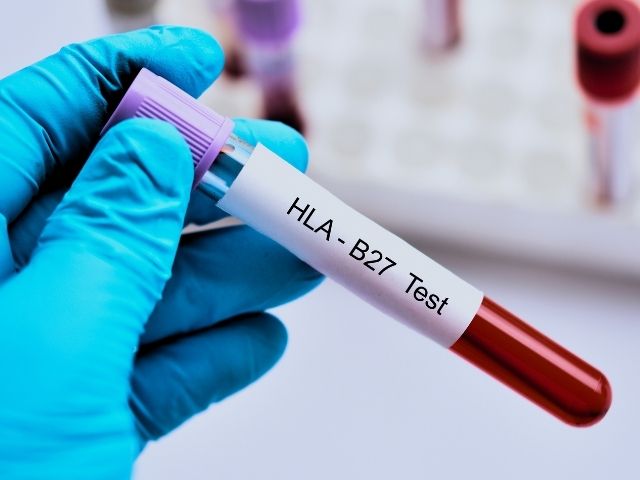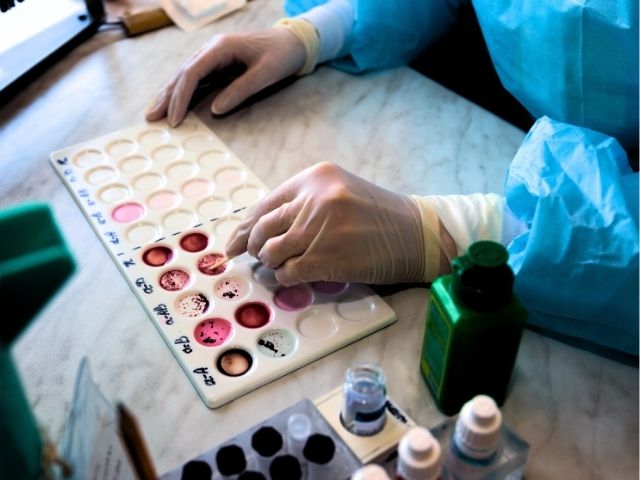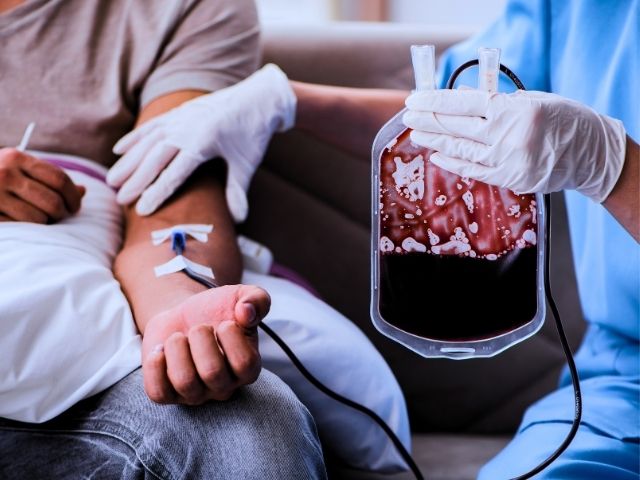Industry News | Inside Scoop Virtual Nursing isn’t New — So Why Does it Feel That Way? Virtual nursing and telemedicine aren’t new concepts. They date back to the 1960s and have related uses in NASA. However, the COVID-19 pandemic brought the concept of virtual...
A Nurse’s Guide to HLA Typing vs Blood Typing
- HLA typing determines the pattern of HLA proteins in a patient’s cells, while blood typing determines the type of antigens present in a patient’s blood.
- These screenings determine whether donors for stem cells, organs, and blood are compatible.
- Despite often not being directly involved in HLA typing, nurses need to understand how this screening relates to their patient’s treatment.

Amanda Guido
RN, BSN
When identifying compatibility for blood transfusions, organ transplants, and other organic material between patients, there are two types of testing to consider HLA typing and blood typing. These typings are often confused but identify the presence of different proteins in a patient’s cells.
Compare the differences between HLA typing and Blood typing, as well as the use cases for each kind of identification. Knowing these differences and being able to explain them to your patient may be critically necessary when considering transfusions/transplants.

HLA Typing vs Blood Typing
HLA Typing
Human leukocyte antigen (HLA) is a genetic test that looks at immune proteins in the cells. All cells of your body have HLA proteins, except red blood cells. Your body knows the pattern of HLA proteins on your cells and anything that differs from that, your body recognizes as foreign and will destroy.
HLA typing can be performed from a peripheral blood draw or from swabbing the cheek. HLA typing is necessary before performing bone marrow transplants or solid organ transplants. The closer the HLA match between a recipient and donor – the higher the chance of a successful transplant.
Blood Typing
Blood typing is performed to look at a person’s blood type (A, B, AB, and O) and the Rh factor. Rh factor is a protein found on the surface of red blood cells. Blood typing can be performed by a type and crossmatch and a type and screen.
A type and crossmatch is when the donor’s blood is mixed with a small amount of the recipient’s blood in a vial to look for a reaction. Reactions include clumping of the blood. This means the blood is not compatible. A type and screen is performed by running tests on an individual’s blood to determine the donor type and Rh factor, without mixing any blood.
Any time a patient is going to receive a blood transfusion, including low hemoglobin, bleeding, blood cancers, etc. as well as anyone who wants to donate blood will also have their blood checked.

Comparing Typing
HLA and blood typing are two separate processes, but very often get confused. Sometimes both HLA typing and blood typing are needed, but other times both are not necessary.
For example, HLA typing is used for stem cell transplants and organ transplants. In stem cell transplants, the donor and recipient need to be HLA identical, but the blood type is not as important. However, for a solid organ transplant, the recipient and donor need to be HLA and blood type identical to prevent rejection of the organ.
For stem cell transplants, there are different types of matches depending on how close a donor and the recipient’s HLA alleles are in relation to each other. The most identical will be chosen to be the patient’s donor. However, if a close enough match cannot be found, it can lead to graft versus host disease – the healthy stem cells from the donor attack the recipient’s organs because the HLA proteins cannot recognize each other.
This leads to the recipient’s organs being identified as foreign and antibodies attack, which can lead to lifelong complications, even death. Common organs to be affected by graft versus host disease include the skin, GI tract, and liver. However, other organs can be affected including the eyes, lungs, and genitals. Antirejection medication is given to stem cell and organ recipients in an effort to prevent this from occurring, but it is not always successful.
On the other hand, a recipient and donor of blood transfusions do not need to be HLA-matched. This is because red blood cells do not have HLA proteins and they just need to be ABO compatible.
There is no risk of graft versus host disease in blood transfusions, only blood transfusion reactions. This can happen due to the donor and recipient not being ABO compatible or it can happen for other reasons including the transfusion infusing too quickly, blood containing infectious microbes, or an allergic reaction that may take place during a blood transfusion.
Signs of a transfusion reaction include fever, rash, back pain, chills, and shortness of breath. Transfusion reactions can be treated with Benadryl, epinephrine, steroids, bronchodilators, and oxygen. Transfusion reactions are not chronic, and a patient can continue to receive blood products after a reaction has happened, but the patient will have to get premedication before the transfusion such as Benadryl and a steroid.
HLA Typing and Blood Typing in Practice
Blood typing and HLA typing relate to practice in very specific ways. Blood typing is used more often than HLA and is seen commonly on units that have a high chance of transfusing blood such as the operating room, hematology units, labor and delivery units, orthopedic units, and trauma units.
Nurses facilitate this process by drawing the type and screen, and double check with the RN the patient’s name and date of birth to ensure the correct patient label is going on the vial of blood to get tested. Also, before the patient gets transfused, two nurses must verify the patient’s date of birth, blood type, unit number, and expiration date before transfusing to the patient.
HLA on the other hand is less commonly used, due to it not being essential to everyday procedures in the hospital and it is a much more complicated test. HLA typing is used on stem cell and organ transplant units; however, nurses have a more standoff approach with HLA typing.
It is important for nurses to understand HLA typing and its implications – when a patient arrives at a stem cell or organ transplant unit, a donor is already identified. Nurses do not facilitate the process as they would for ABO compatibility.

The Bottom Line
In conclusion, both tests are crucial to nurses and healthcare providers alike, continuing to provide the best care possible. HLA and blood typing procedures are constantly being analyzed to ensure the safest, most effective ways to identify donors for recipients.
Ways to improve typing will continue to evolve in an effort for nurses and patients to feel safe and for trust to be established to ensure that the patient is getting an accurate match.
Love what you read?
Share our insider knowledge and tips!
Read More

Therapeutic Interventions: A Nurse’s Guide
Inside Scoop Therapeutic Interventions: A Nurse’s Guide Learn common therapeutic interventions nurses can use to support patients in treatment. Understand how to effectively administer medication to patients while keeping them calm and informed. Review...

A Nurse’s Guide to Evidence-Based Practice in Nursing
Inside Scoop A Nurse’s Guide to Evidence-Based Practice in Nursing Understand what occurs when a curious mindset is not present in nursing practices. Identify what happens in nursing care due to a lack of evidence-based practices. Recognize the barriers that...


